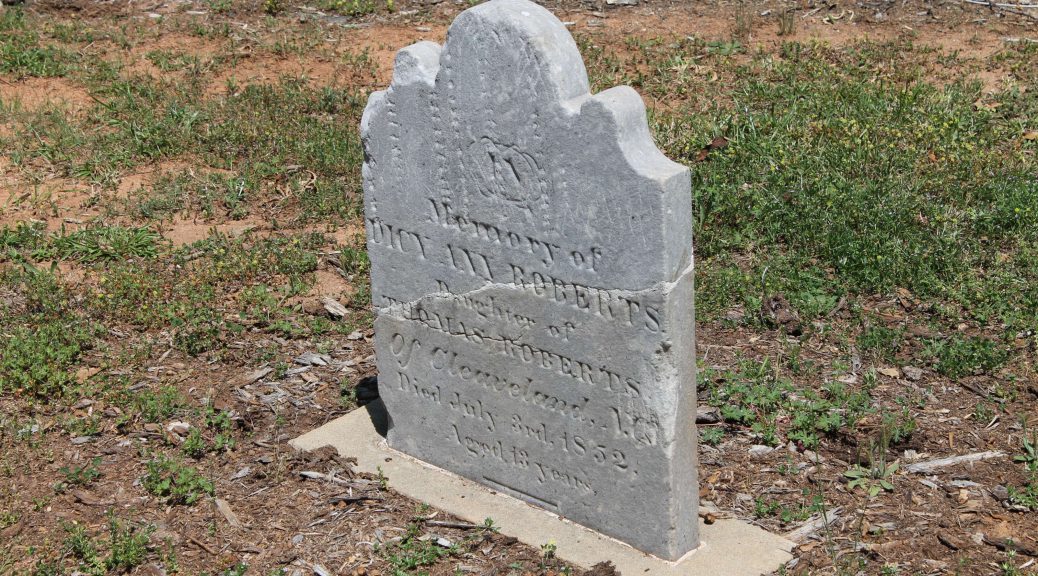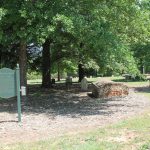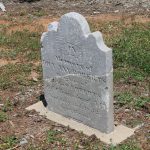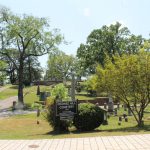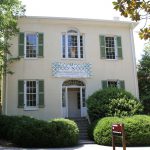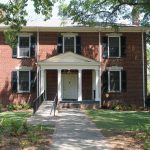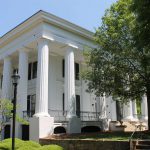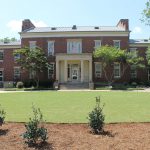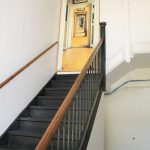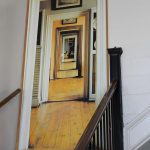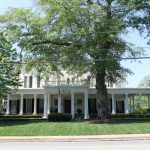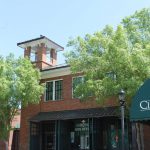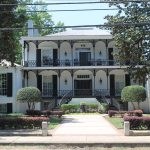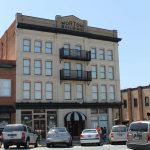Athens’ rich history sparks interest in claims of ghostly encounters and haunted buildings
As one of the original colonies, the state of Georgia has a long and rich history rooted in the antebellum and Civil War eras. With Georgia being the site of multiple battles of the Civil War, there are several cities and locations that are said to be haunted by a sad and violent past, and according to Daniel W. Barefoot’s book, “Haunted House of Ivy: Ghosts of Southern Colleges and Universities,” Athens is one of them.
Athens was one of the few cities that was spared in Union Gen. William Tecumseh Sherman’s famed March to the Sea, during which he burned nearly every city in his path. According to a 2014 article in The Washington Post, the general aimed mostly to destroy plantations and large cities, sparing a few locations along a path that is known as the “Antebellum Trail.”
Joining other towns spared on the trail such as Macon, Madison and Watkinsville, Athens drew people in during and following the war. Some of these people included former Confederate soldiers and officers who came to teach at the University of Georgia, according to Barefoot.
Other families moved to the town and built or purchased mansions that can still be seen today on streets like Milledge Avenue and Prince Avenue.
As the city’s population grew, so did its death toll. According to Barefoot, disease, suicide and murder plagued several of the families who lived in Athens, and some believe the spirits of the dead have never truly left.
Students on the university’s campus have heard of or taken an interest to the tales of the hauntings, but many do not think that they are true. According to an online survey of 82 university students, only 34.1 percent believe in the hauntings in Athens and around campus. However, some claim to have encountered the spirits that supposedly linger in the town.
“My friend thought she saw her when she woke up in the middle of the night once,” said UGA sophomore and Alpha Gamma Delta member Kallyn Glasser, in reference to the ghost of Susie Carithers, who is said to haunt the sorority house. “I don’t really believe in it, but I know lots of people do,” she said.
Some believers have even gone out of their way to look for the ghosts themselves. Emma West, 20, recalls a time she and her friend went into Joseph E. Brown Hall on campus in search of what is called the “stairway to nowhere,” leading to a sealed doorway that formerly served as a dorm where a student took his life in the 1970s.
“Me and my friend went on a hunt freshman year to find the stairway,” she said, “eventually we found it, and I immediately got chills and felt an eerie presence.”
Others, like West, have ventured to dig deeper into the hauntings of Athens and the university. Michele Griffin, a former haunted tour guide for the Athens-Clarke Heritage Foundation, spent much of her time researching the history of the town to validate the claims of hauntings.
Some of the reportedly haunted sites in Athens that Griffin has researched and visited include The Classic Center, Demosthenian Hall, the Old Athens Cemetery and Lustrat House.
An Interactive Map of the Haunted Sites of Athens
Interact with the map here.
Don’t believe in the ghosts of Athens? There is actually more truth to the stories behind the hauntings than you’d think. Athens has a rich history of famous families, war veterans, professors, students and more, all of which have given background to some of the hauntings reported in the area. Michele Griffin, an administrative assistant on the Health Sciences Campus at the University of Georgia and former haunted tour guide for the Athens-Clarke Heritage Foundation, provided insight into the histories behind Athens’ ghostly past.
Old Athens Cemetery
Located on Jackson Street on UGA’s campus, this cemetery served as the main burial site for the town until around 1898, when it became too overcrowded and was later neglected. Beyond its rusted gates lie tombstones and memorials that fell victim to heavy vandalism, which some believe has caused spirits within the cemetery to become restless and angry. Griffin shared one story of a little girl named Dicy Ann Roberts, who visited Athens in 1825, fell ill, died and had to be buried here. “People have seen a little girl walking around, looking lost,” Griffin said, “they think she is looking for her parents, who left her when they buried her.”
Oconee Hill Cemetery
Oconee Hill Cemetery became the primary cemetery for the Athens area after the Old Athens Cemetery was closed for burials in 1898. It sits right next to Sanford Stadium, looming eerily over the heart of campus. A river flows through the grounds and above it sits a bridge. According to a 1972 article in The Red & Black, a ghostly horse and carriage can be seen and heard crossing the bridge at midnight on the night of a full moon. The legend, which still circulates today, is that the ghost is that of a farmer who died after driving off the bridge one night.
Demosthenian Hall
The ghost of an expelled UGA student reportedly haunts the Demosthenian Hall on North Campus. In 1828, Robert Toombs was ousted from the university. In an act of defiance, he returned to UGA to give a speech on North Campus during the same time as the spring graduation commencement. The legend is that, on the day of Toombs’ death, years after his return to UGA, a bolt of lightning struck the tree under which Toombs delivered his speech. According to a 1999 article by The Athens Banner-Herald, Toombs’ ghost has been heard pacing the floor, telling students to leave the hall, and has even been seen as an apparition.
Lustrat House
Built in 1847, the Lustrat House on North Campus originally served as faculty housing, which is why it is reportedly haunted by the ghost of a professor and former Confederate soldier, Dr. Charles Morris. Morris and his family moved into the Lustrat House, but when the university relocated the building to its current lot on North Campus, “he was absolutely furious,” Griffin said. After Morris and his family eventually left, he died very soon after. Later, the Lustrat family moved into the building and discovered that they were not alone. Marie Lustrat, one of the daughters of the family, left written letters behind. “Marie said they knew from the get-go that they were not alone,” Griffin said. “She said they ‘routinely’ saw [Morris] at the dining table and in chairs.”
The Taylor-Grady House
The Taylor-Grady House was built in the mid-1800s by Gen. Robert Taylor of the Georgia Militia and his family, and it has seen death multiple times. Taylor was killed in a train accident in 1859, and the house was passed on to his son, whose wife passed away. Visions of a woman in a bridal gown have been reportedly seen in the house. The property was later purchased by Maj. William S. Grady, father of Henry W. Grady, after whom the Henry W. Grady College of Journalism and Mass Communication at UGA was named. Maj. Grady was killed in the Civil War during the Battle of Petersburg. According to a 2001 article in the Athens Banner-Herald, Henry Grady reportedly saw a vision at the top of the stairs more than once, and others have seen the ghost of Maj. Grady return to the house with a woman on Christmas Day.
Joseph E. Brown Hall
A tragic story of suicide haunts Joseph E. Brown Hall, which formerly served as a student dormitory. “In the 70s, over Christmas break, [a student] took his life. He was suspended in the air for several days,” Griffin said. After the discovery of the body when the students returned, they complained of the stench. Cleaning crews could not remove the odor, so the room was sealed shut. An English professor put up a painting of an optical illusion by Johann Wolfgang von Goethe over the sealed door. “He thought it would draw the ghost in and trap him,” Griffin said. People have heard eerie noises and felt that they were not alone, she said, “and the night [cleaning] crew refuses to go in after sundown.”
Alpha Gamma Delta House
The Alpha Gamma Delta house on Milledge Avenue is called “The Wedding Cake House” because it was given to Susie Carithers and her fiancé as a wedding gift from her father. On their wedding day, however, Carithers’ fiancé was en route to the ceremony, but “there was a lot of rain,” Griffin said, “and it washed out the bridge, causing them to take a very long route.” Because of this, Carithers’ groom was very late, but Carithers assumed he was not coming to their wedding, so she hung herself in the attic. According to a 2013 article by The Red & Black, people have seen Carithers looking out at them from the attic window.
The Classic Center (Fire Hall No. 1)
What is now known as The Classic Center formerly served as the first fire hall in Athens. Griffin shared the story of firefighter Hiram H. Peeler, who died tragically when he fell into an elevator shaft during a fire at the Bridges Funeral Home. Peeler now supposedly haunts the fire hall in his uniform. Years ago, an employee at The Classic Center had gone to lunch, and when she returned, “she saw a man in uniform staring back at her,” Griffin said. When the employee arrived, he vanished. Griffin and a friend also visited The Classic Center to find evidence, and reported that they found disturbances on a device used to detect magnetic fields, as well as having irritated eyes. Griffin said she thinks the sudden irritation may have been smoke, tying back to the firefighter and his death.
Phi Mu House
Similarly to the story of the Alpha Gamma Delta house, the haunting of the Phi Mu house stems from a tale of an engaged couple struck by tragedy. According to a 2013 article by The Red & Black, a woman named Anna Hamilton lived next door to what is now the sorority house. She witnessed her fiance’s murder, and his body was then buried beneath the steps of the house. The Red & Black reported that sisters in the house have spoken to Hamilton through a Ouija board and have heard her crying, presumably over her lost lover.
Morton Theatre
The Morton Theatre, which opened in 1910, has a history of spooky encounters, including cold spots, sounds of breathing and footsteps, and apparitions, according to the Ghosts of Georgia Paranormal Investigation team, who investigated the building in 2014. The team also reported a file cabinet drawer opening on its own, disembodied voices saying “hey” on multiple occasions, dark masses and green and blue lights. According to the report, one member of the team, who acts as a psychic medium, had an experience with an African-American woman in a black dress in the lobby of the theater. The team member also received the name “William Tell” while on stage, and in her later research, she learned of a performer named “Blind Willie McTell,” who played at the theater.
Photo Gallery of Athens Haunted Sites

